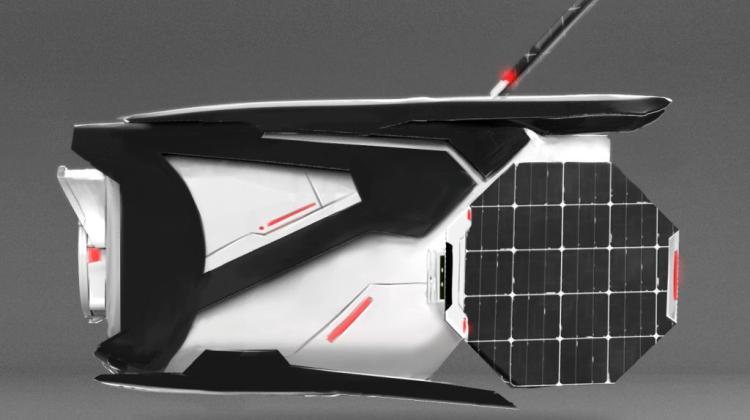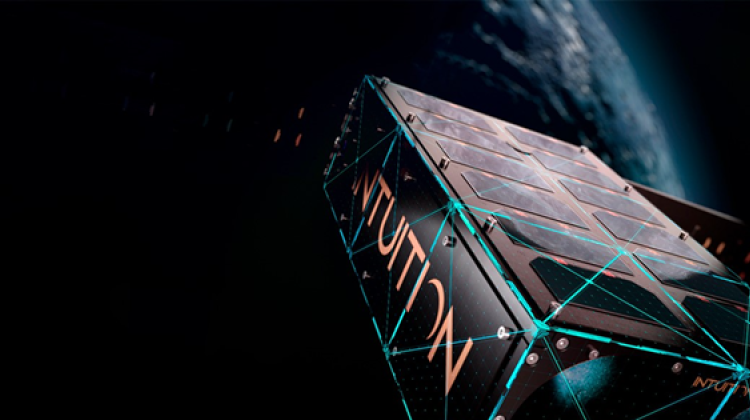Polish commercial satellite Światowid will examine the Earth's magnetic field

Work is underway on Polish private commercial satellite. The task of Światowid - as the satellite is named - will be to examine the level of intensity of Earth's magnetic field. According to plans it will be presented in the beginning of 2017.
Wrocław company SatRevolution is responsible for building the first Polish commercial satellite. Światowid is to be presented in the beginning of 2017 and embark into space around the third quarter of next year. Now SatRevolution is in talks with companies that will help launch Światowid.
"Światowid is a research satellite. Its primary task will be to study, among other things, the level of intensity of the magnetic field, changes in the magnetic field and gravity of the Earth, as well as weather changes and phenomena in the thermosphere" - told PAP co-founder of SatRevolution SA, Grzegorz Zwoliński.
Thanks to remote sensing carried out by Światowid - explains Zwoliński - it will be possible to obtain vital information about the terrestrial environment. Images obtained through its optical system may be used in meteorology, oceanography, geology and cartography. Large potential fields of applications of satellite images are also forestry and agriculture. Data may also be of interest to construction companies planning their investments in hard to reach areas and companies engaged in cartography. Satellite images are also used in the planning of local land development, assessing the risk of various types of disasters and environmental monitoring for climate change.
"A set of sensors will allow to accurately measure changes in Earth\'s magnetic field depending on the position of the satellite. In the future, after launching a sufficient number of nanosatellites, it will be possible to observe these changes in real time. This will allow for a better understanding of the impact of external factors - such as the solar wind - on the magnetic shell of the Earth. It will also translate into the ability to conduct research into links between the condition of the magnetic field and, for example, climate change, efficiency of power networks. Research possibilities are huge" - emphasised Grzegorz Zwoliński.
In addition, the satellite will measure the gravity depending on longitude and latitude. It is also planned to create maps and monitor gravity changes over time. They can be used to study the movement of tectonic plates and detect possible threats. "The results of the research will certainly be of use to universities and research institutes. Private investors will also find something for themselves" - noted co-founder of SatRevolution.
The shell of the Polish satellite has been made from a special aluminium alloy with profiled wall. As a result, the device is not only resistant to any vibration it might encounter during the flight, but also to cosmic radiation. High durability of external elements of Światowid also provides resistance to frequent and rapid temperature changes - from minus 150 deg. C to 300 deg. C, because these can be expected in orbit.
Inside the satellite there will be items such as retractable handle for the camera with the lens to protect it from damage from the outside. All electronic components will be fixedly mounted, separated from each other and from high temperatures on the housing. In addition, the satellite will use an advanced system of opening photovoltaic panels and their positioning with a Sun position sensor and the antenna, which will be directed toward the Earth.
"In order to achieve desired features, such as high durability and low mass, very high detail of cutting all the elements with 0.2 percent accuracy and the optimal shapes of individual parts, the entire structure was made using 3D printing technology. The form of the individual elements will allow for the precise arrangement of the modules within the satellite. As for the size of the housing itself, it has a parallelepiped shape with dimensions 10x10x20 cm"- said Zwoliński.
The only partner of SatRevolution is the centre EIT +, which has provided a special clean room with controlled environmental parameters, in which the company will continue research on space technologies. "In contrast to other Polish companies in the aerospace industry, we want to be an integrator, create a complete solutions from A to Z. Our aim is not only to design and build satellites. We also want to be capable of launching them into orbit ourselves" - told the PAP the co-founder of SatRevolution SA, Grzegorz Zwoliński.
Around 2020, another Polish utility satellite is scheduled to be launched: SAT-AIS-PL. It is being built by a consortium of domestic companies and research institutions for the European Space Agency. The satellite will be part of the maritime traffic safety system.
PAP - Science and Scholarship in Poland, Ewelina Krajczyńska
ekr/ agt/ mrt/
tr. RL
Przed dodaniem komentarza prosimy o zapoznanie z Regulaminem forum serwisu Nauka w Polsce.


















